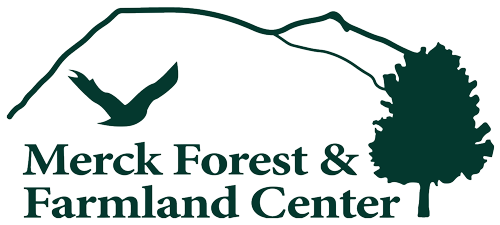
We were very fortunate to have University of Vermont graduate student, Kat Deely, work at Merck Forest this past summer. Kat came in May to work on mapping natural communities found across our 3,160 acres of land. After months of gathering data and compiling her information into a report, she presented to the MFFC staff and Board this past Wednesday. It took a lot of work to get to that point though…
Starting in the late spring, Kat moved into the Lodge with the apprentices. Going out during the day with her dog, Moose, she hiked through Hemlock Forests, Dry Oak Woodlands, and Red-Spruce -Northern Hardwood Forests. Along the way, Kat plotted GPS points, mapping out the location of the various community types found here. It took her a few weeks to walk the entire property, but that was only the beginning.
All of that information had to be sorted through. GIS (Geographical Information Systems) was critical in helping to lay out the research that Kat had compiled. Using GIS, Kat was able to check her information with already collated research on regional soil types, geology, deer habitat, rare, threatened, or endangered species of note, etc. All of this information is presented in a layered format. This stratigraphy of information gives the viewer of Kat’s research an idea of site topography, the different natural community types, where species of concern might be located, and finally, the crux of Kat’s work, areas where Merck Forest and Farmland Center might consider implementing various management strategies.
Merck Forest, as a working landscape, actively manages its forest for wildlife habitat, sugaring, and timber sales. While studies have been done before, Kat’s work is the most extensive: it really shows us where we should or should not be working the landscape and where the best wildlife habitats are.
For instance, Kat noted several natural community types that are rare within the state of Vermont. These include areas such as the Dry Oak Woodland by the Lookout. Applying a “no touch” or “light touch” policy to these sites may help natural communities on site survive and thrive, and adapt, as climate weather patterns change.
Thank you to Kat for such a wonderful report. Her work will be critical in our decision-making in the future.
Kat’s final document will be placed on our resource page, shortly.
